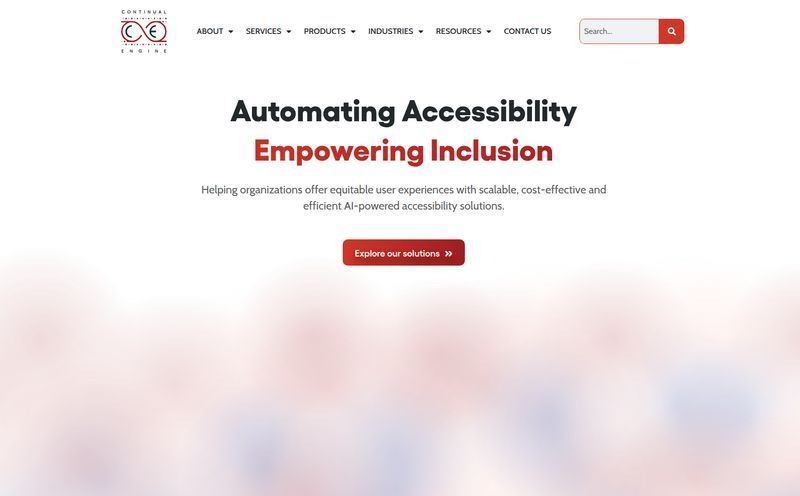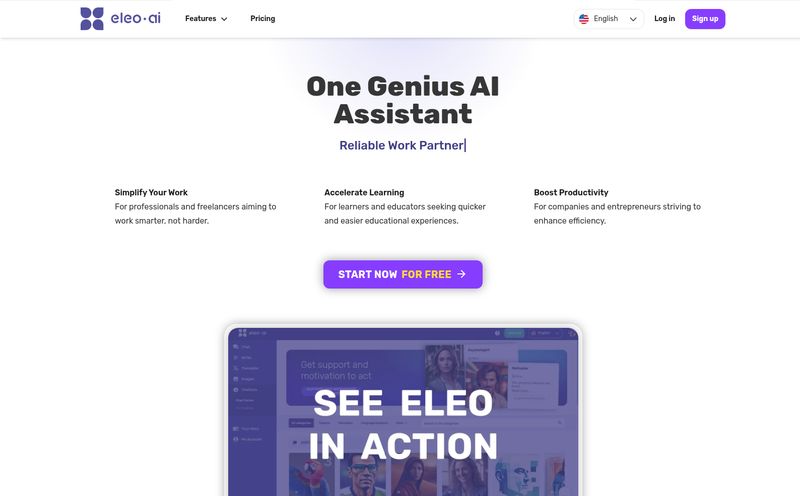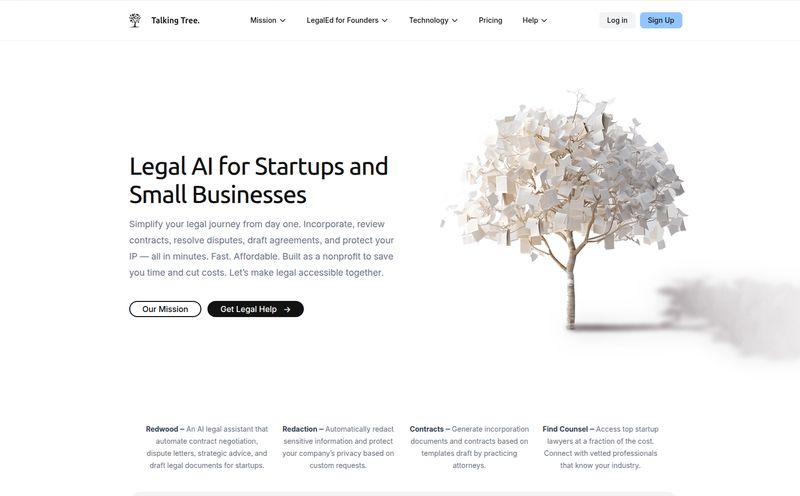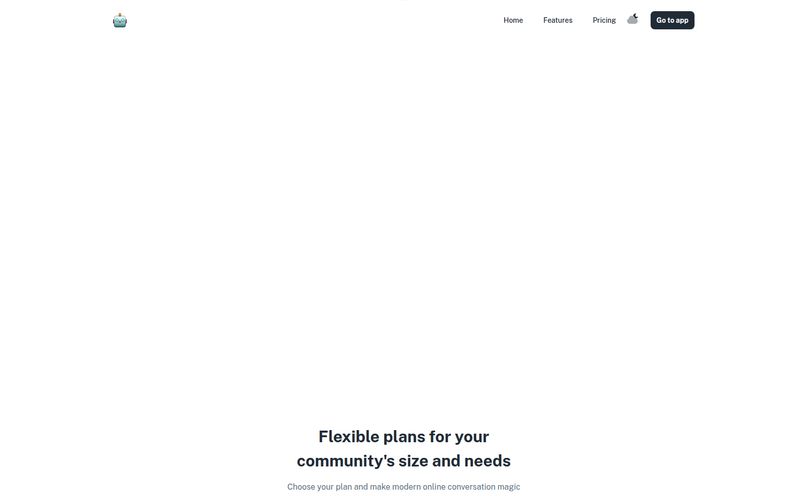I still get a cold sweat thinking about it. A few years back, a major client dropped a folder on my virtual desk with about 200 PDFs. They were all critical—annual reports, product manuals, research papers—and they needed to be “made accessible.” Yesterday, of course.
For anyone who's been in the SEO or digital content trenches, you know what a nightmare that is. Manually remediating a PDF to make it compliant with standards like WCAG is a soul-crushing, time-devouring task. It's like trying to translate a novel into another language using only a pocket dictionary from the 1980s. You can do it, but it’s gonna be painful and probably not perfect.
So, when I see a platform like InclusiveDocs that boldly claims to be “pioneering the future of accessibility with AI,” my inner cynic and my hopeful optimist get into a fistfight. The cynic scoffs, “Another buzzword-laden solution,” while the optimist whispers, “But what if… what if they’ve actually cracked it?”
Let's take a look under the hood and see what’s really going on.
What on Earth is InclusiveDocs Anyway?
At first glance, it looks like a clean, professional platform. They’ve got some big-hitter logos on their homepage—Philips, Honda, Deutsche Bank—so they’re clearly not a startup working out of a garage. This isn't their first rodeo.
The core of their offering is this: InclusiveDocs is an accessibility platform that uses artificial intelligence to automate the gnarly process of making digital content, especially PDFs, accessible to everyone. This means making them compliant with regulations like Section 508 and the Web Content Accessibility Guidelines (WCAG) 2.1 AA. It’s not just about avoiding lawsuits; it's about genuinely opening your content up to a wider audience, including people using assistive technologies like screen readers.
They talk about a “strategic methodology to address every accessibility concern,” which sounds like fancy marketing talk. But what it seems to boil down to is a system that tackles the problem from the ground up, rather than just slapping a temporary bandage on it.
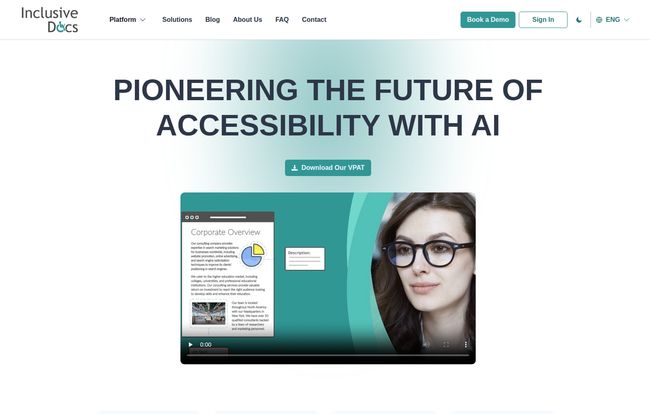
Visit InclusiveDocs
The Lingering Headache of PDF Accessibility
Why do I keep harping on about PDFs? Because for decades, they have been the black hole of web accessibility. They’re designed to be digital printouts—static and self-contained. This makes them inherently hostile to things like responsive design and screen readers.
Making a PDF truly accessible involves a ton of behind-the-scenes work:
- Tagging Structure: Creating a logical reading order (headings, paragraphs, lists) that a machine can understand.
- Alt Text: Adding descriptive text for every single image.
- Table Headers: Properly defining rows and columns so the data makes sense when read aloud.
- Language Identification: Setting the document's language for correct pronunciation by text-to-speech engines.
Doing this manually for one document is tedious. Doing it for hundreds? It's a full-time job. A very, very boring one.
How AI Becomes Your Accessibility Super-Intern
This is where InclusiveDocs throws its hat in the ring. Their whole pitch revolves around using AI to do the heavy lifting. Instead of a person manually going through and tagging every element, their system analyzes the document and automates a huge chunk of the process. Think of it as having a super-smart intern who can scan a 100-page report in seconds, identify all the headings, images, and tables, and tag them correctly—without needing a single coffee break.
This is a huge deal. The cost and time savings are obvious. It transforms the workflow from painstakingly manual labor to a more streamlined process of review and verification. The AI does the grunt work, and a human expert can then come in to handle the nuanced bits and give final approval. This hybrid approach is, in my opinion, the most realistic path forward for large-scale accessibility projects.
Plus, they incorporate features like text-to-speech, so users can listen to the content, and ensure everything is compatible across different devices and with various assistive technologies.
Beyond PDFs: It’s About the Bigger Picture
While PDF remediation is clearly their star player, InclusiveDocs seems to understand that accessibility is not a one-and-done task. It’s a cultural shift. A truly accessible organization integrates these principles into everything they do. By providing tools that make compliance easier, they’re lowering the barrier to entry.
The business case is simple, and one I’ve been making for years. First, you mitigate legal risk. Accessibility lawsuits are on the rise, and ignorance is no longer an excuse. Second, and more importantly, you expand your audience. The CDC reports that 1 in 4 adults in the U.S. have some type of disability. Why would you want to exclude a quarter of your potential market? It just makes bad business sense.
The Catch: Let's Talk Pricing and Learning Curves
Alright, it can't all be sunshine and roses. Two things stand out. First, there's no pricing page. This is a classic sign of an enterprise-level SaaS product. It means you can't just swipe a credit card and get started. You'll have to book a demo and get a custom quote. For a small business or a solo blogger, this might be a non-starter. My gut tells me this solution is priced for universities, government agencies, and large corporations—the kinds of places with those 200-PDF-at-a-time problems.
Second, any powerful tool has a learning curve. I wouldn't expect to master InclusiveDocs in an afternoon. To truly leverage an AI-powered system, you need to understand its capabilities and its limitations. There will be an onboarding process and some training involved. But let's be fair, the payoff for that investment is getting out of the manual remediation salt mines. I’ll take that trade any day.
Proof is in the Pudding and the People
I’m always a bit wary of cherry-picked testimonials, but the one on their site is pretty compelling. It’s from a Falguni H., an Office Manager, who says: “We are thrilled! As a blind professor of business, I am happy to be able to work with this software, and it supports us wonderfully in our goal of building a more accessible campus for our company.”
Now that's a powerful statement. When someone who relies on assistive technology gives a tool their seal of approval, it carries a lot more weight than a generic marketing quote. They also boast some impressive numbers: 15+ years in the business, over 300 clients, and a staggering 150,000+ PDFs remediated. They've been around the block, and they have the scars and the successes to prove it.
So, is InclusiveDocs a Game Changer?
I walked in a skeptic, and I'm walking out... cautiously optimistic. For the right kind of organization, InclusiveDocs looks like it could be a godsend. It tackles one of the most persistent and frustrating problems in digital content with a smart, modern solution. It's not magic; it’s the logical application of AI to a problem that’s perfectly suited for it.
If you're a small operation, this might be overkill. But if you’re at an institution that’s drowning in a sea of inaccessible documents and facing the mounting pressure of compliance, then getting a demo seems like a no-brainer. It could be the difference between viewing accessibility as an expensive burden and seeing it as a strategic advantage.
FAQs About InclusiveDocs
- What is InclusiveDocs in simple terms?
- It's a platform that uses AI to automatically fix digital documents, especially PDFs, to make them usable for people with disabilities and compliant with legal standards like WCAG.
- Is InclusiveDocs only for making PDFs accessible?
- While PDF remediation is a major feature, the platform promotes a wider, strategic approach to digital accessibility across an entire organization, ensuring all digital resources are considered.
- Who is the ideal user for InclusiveDocs?
- Based on their client list and the nature of the problem they solve, it's best suited for larger organizations like corporations, universities, and government bodies that manage a high volume of documents.
- How does InclusiveDocs help with legal compliance?
- It automates the process of meeting technical standards like WCAG 2.1 AA and Section 508, which are often cited in accessibility legislation. This helps organizations mitigate the risk of legal action.
- What makes it different from a simple accessibility checker?
- A checker just tells you what's wrong. InclusiveDocs aims to fix what's wrong. Its AI-powered remediation engine actively works to correct the accessibility issues, saving significant manual effort.
- How much does InclusiveDocs cost?
- Pricing isn't publicly listed. You need to contact them for a demo and a custom quote, which is typical for enterprise-focused software.
My Final Word
Accessibility isn't a feature, and it's not a trend. It's a fundamental aspect of good design and ethical communication. For too long, the technical hurdles have served as an excuse for inaction. Tools like InclusiveDocs are kicking that excuse to the curb. By making the process more efficient and scalable, they’re not just selling software; they're helping build a more inclusive, and frankly, a more interesting web for everyone. And I'm all for that.
